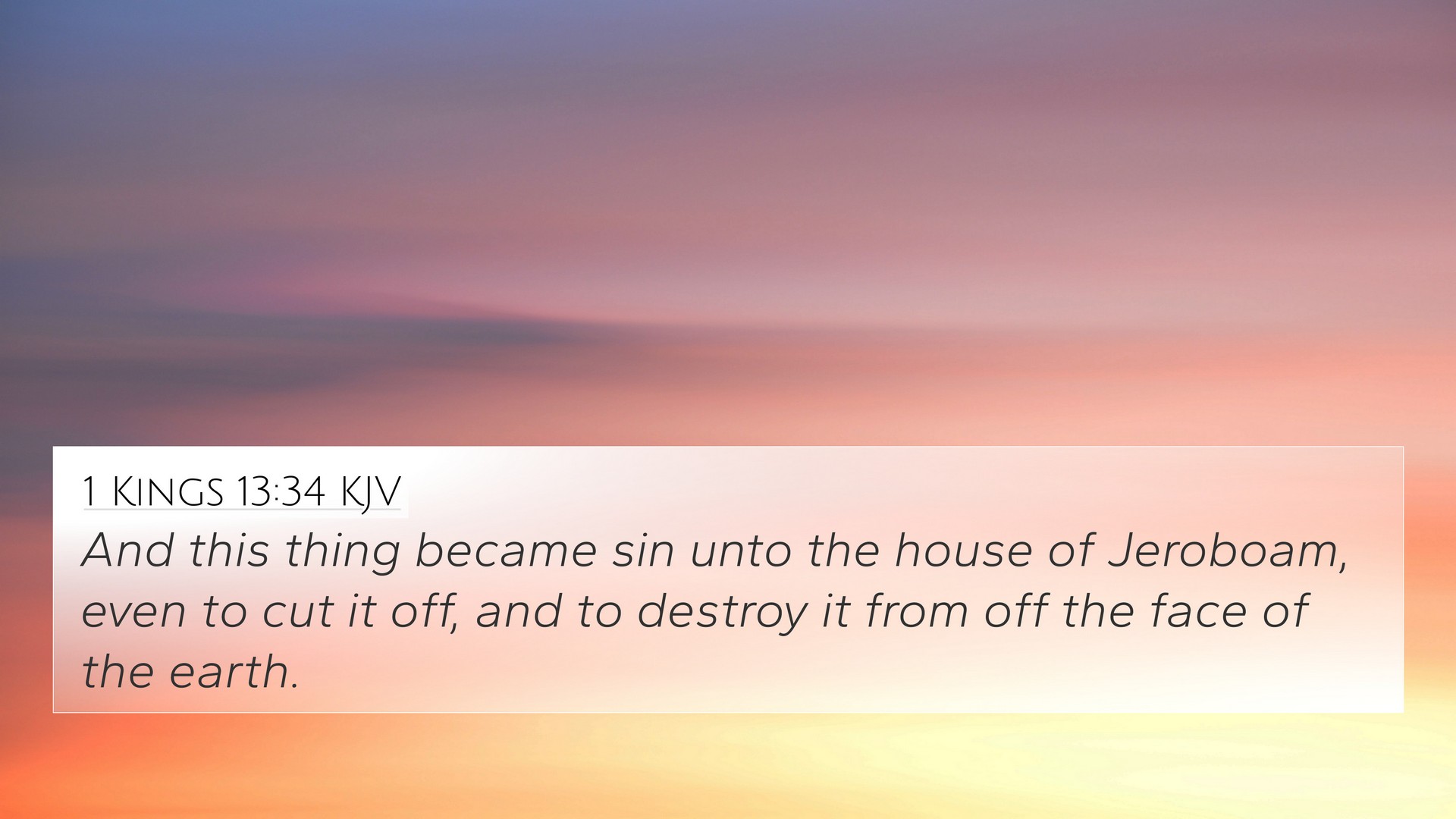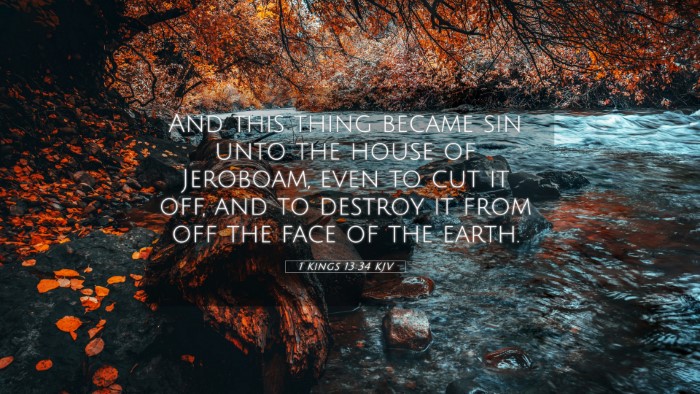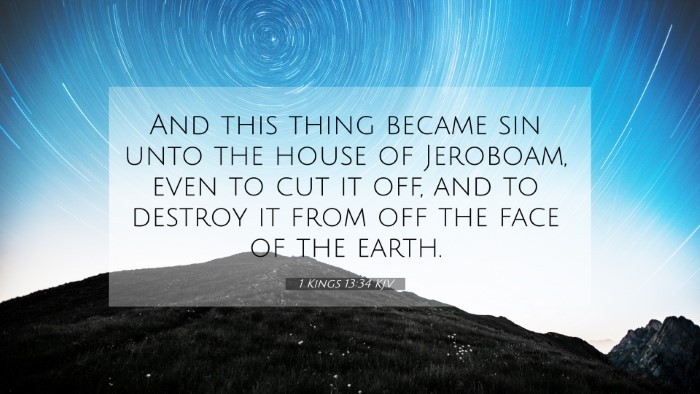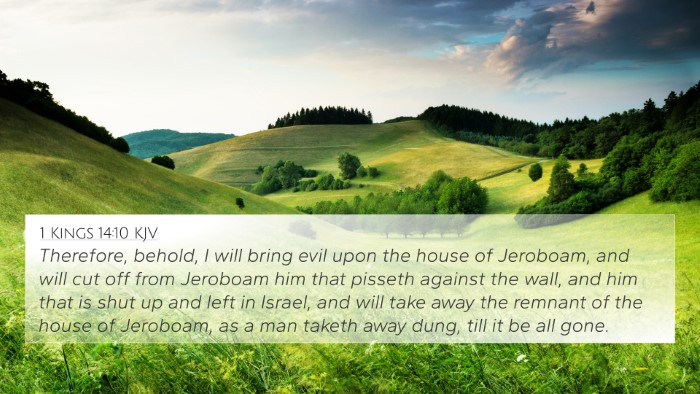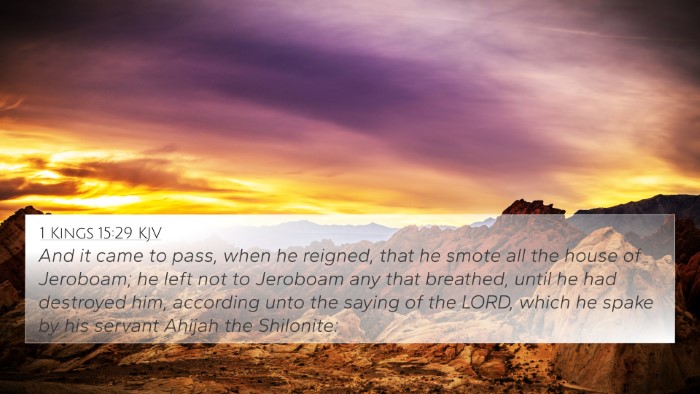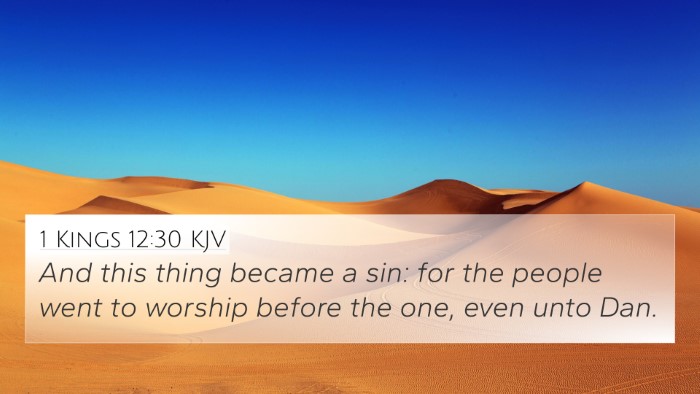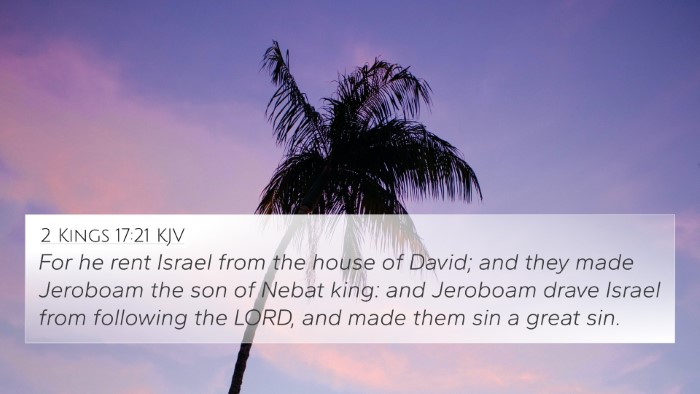Understanding 1 Kings 13:34
Verse Reference: 1 Kings 13:34 - "And this thing became sin to the house of Jeroboam, even to cut them off, and to destroy it from off the face of the earth."
Overview of the Verse
This verse serves as a pivotal conclusion to the narrative concerning King Jeroboam, detailing the ramifications of his actions that led the nation of Israel into sin. The statement emphasizes the grave consequences of idolatry and improper worship practices introduced by Jeroboam, illustrating the seriousness of deviating from God's commandments.
Commentary Insights
Matthew Henry's Commentary
Matthew Henry points out that Jeroboam's innovations in worship were a deliberate break from God's established order. His actions were not only egregiously sinful but also served as a snare for his entire household. Henry warns that sin often leads to further sin, creating a cycle of disobedience that ultimately leads to destruction.
Albert Barnes' Notes
Albert Barnes emphasizes the theological implications of Jeroboam’s leadership. He notes that the introduction of false worship and the establishment of golden calves as objects of reverence resulted in a legacy of wickedness. Barnes highlights how this practice 'became sin' not just for Jeroboam but for his descendants, ensuring a continued path of judgment and demise.
Adam Clarke's Commentary
Adam Clarke elaborates on the historical context of this verse, indicating that Jeroboam's actions prompted divine judgment that would not only affect him but also culminate in the downfalls of his lineage. Clarke also remarks on the comprehensive nature of God's judgment, which serves as a warning to future generations about the dangers of leading others into sin.
Thematic Connections
This verse exemplifies the theme of divine judgment against idolatry and the consequences of corrupt leadership. It connects to other biblical narratives that address the perils of straying from God’s commandments. The following sections elucidate pertinent cross-references that illustrate these connections:
- Exodus 20:4-5 - God's commandment against idol worship.
- 2 Kings 10:28-29 - Further condemnation of Jeroboam's idolatry.
- Hosea 1:4 - Prophecy regarding the judgment on the house of Jeroboam.
- Jeremiah 7:18 - The idolatrous practices of the Israelites condemned.
- Micah 5:10-14 - Prophetic warning against false worship.
- 1 Chronicles 10:13-14 - Saul’s downfall serves as a warning against disobedience.
- Amos 5:21-23 - God’s rejection of false worship.
Conclusion
In summary, 1 Kings 13:34 serves not only as a historical account of Jeroboam's failings but also as a timeless warning about the ramifications of leading others towards sin. The integrated insights from various public domain commentaries emphasize the importance of adhering to God's commandments and the inevitable consequences of deviation from divine truth. As believers explore this verse, they unveil a rich tapestry of connections between scripture that reinforce the seriousness of idolatry and the call to genuine worship.
Exploring Cross-References
For those studying this verse, various tools for Bible cross-referencing can illuminate the interconnectedness of biblical texts. By employing a Bible concordance and Bible cross-reference guide, readers can deepen their understanding of how scripture dialogues with itself throughout the Old and New Testaments.
Learning to Cross-Reference
Understanding how to find cross-references in the Bible allows believers to see the continuity of themes and warnings presented in the scriptures, particularly as they pertain to idolatry and leadership. Developing a skill set around Bible cross-reference systems enhances the study experience and enables a more profound grasp of biblical truths.
Encouragement for Study
As one delves into the intricacies of Bible verses that support 1 Kings 13:34, it becomes evident that scripture is interwoven with messages of hope, redemption, and calls for genuine faith. Engaging in cross-referencing Bible study methods enhances the journey of spiritual growth and understanding.
